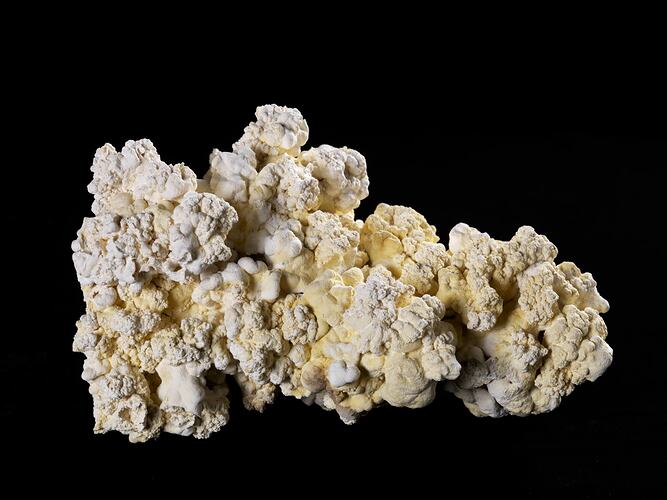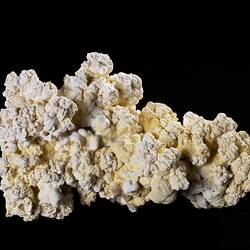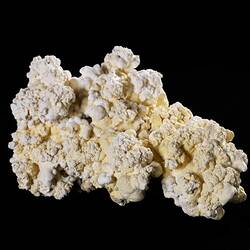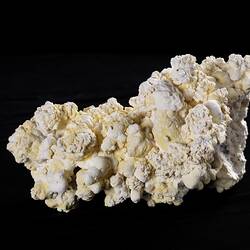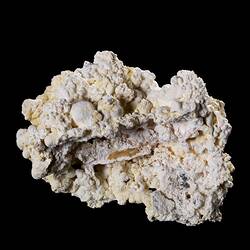Summary
This specimen came from a famous mine in Germany, the Rammelsberg mine near Goslar. It was one of a suite of about 20 specimens obtained by the Museum in 1961, almost by accident. The samples were destined for a mineral dealer's company in South Australia, having been sent by Mr Fritz Bövers, a geological engineer at the Rammelsberg mine. However, the company had closed, so Mr Bövers requested the samples be sent to the Museum instead. The Museum sent some good Australian minerals to Mr Bövers in exchange for his generosity. Mr Bövers also sent mineral specimens from Rammelsberg to the Smithsonian Institution in Washington in 1959.
Halotrichite is a colourless or white mineral that sometimes has a yellow or green tint. It forms a variety of shapes including smooth encrustations to sprays of fibrous crystals. The hair-like clusters the mineral often forms in mines is the root of its name; halotrichite means "hair salt" and is a Latinised form of "haarsalz", an older German name for the mineral. It forms from the weathering of the iron mineral pyrite, also known as "fool's gold".
Halotrichite is known from sites around the world but usually only in small quantities.
Specimen Details
-
Number Of Specimens
1
-
Specimen Nature
Form: Large
-
Species
-
Group
-
Class
-
Associated Matrix
Goslarite
-
Category
-
Scientific Group
-
Discipline
-
Collecting Areas
-
Type of Item
Geospatial Information
-
Country
-
State
-
District
-
Town
